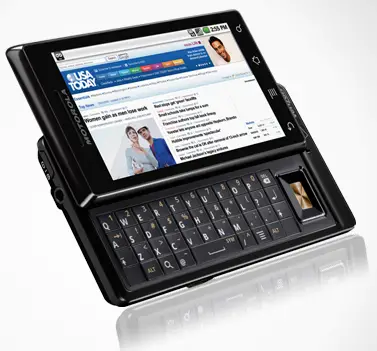
Ever Since the HTC Evo 4G was unveiled at the Cellular Telecommunications and Internet Association (CTIA) show, there has been great hype about the device. Now that the device has been available for several months, we can finally review the real world application of this device.
To begin with, we will begin with one of the notable features of the device, Sprint's 4G WiMax network. Sprint was the first network to transition to 4G services, and at this current point in time, it is still the only network with 4G services, although Verizon is not far away (expected to be introduced early 2011). However, there is one downer to 4G. It is only available in 48 markets as of today, although more coverage is being rolled out continuously. Even if you do not live in a market with 4G, Sprint requires you to pay the $10 premium data fee. However, even without 4G, most if not all customers are still going to enjoy the Evo, and many will be able to justify that extra $10 a month.
Moving on, the Evo is a large phone in size. measuring 4.8 inches tall, 2.6 inches wide, and 0.5 inches thick. With this phone's large size, it weighs 6 ounces and packs a large 4.3 inch screen. Some people will not like the large size of the device, but it makes viewing videos on the go much more enjoyable. The thin nature of the phone also makes the large size more manageable.
In terms of the display, the WVGA 800x480 resolution makes everything look crisp and vibrant. The built in light sensor also can adjust the backlight automatically based on ambient light. There large screen also makes typing on the on screen keyboard relatively easy. Below the screen, there are 4 touch sensitive buttons. These buttons are nice, but occasionally most users will have problems with accidentally tapping them when reaching across the screen. This is a relatively minor gripe, but it can be frustrating. The sides of the phone are fairly empty, with just volume controls on the right side. On the bottom, there is a Micro-USB and HDMI (Type D) port. The HDMI port is great as it allows you to watch your videos from your mobile device on your TV in 720p resolution with a cable. The top of the phone consists of the power button and a 3.5mm headphone jack. On the back there is a kickstand which can be used for video viewing. The kickstand surprisingly is a very good clever feature (with quality construction), one in which I and others who I have talked to have come to really appreciate.
The accessories the device comes with in the environmentally friendly packaging are not anything special. It comes with an AC adapter, and USB cable, an 8GB microSD card, and reference material.
In terms of the user interface, the Evo shines compared to most other Android based phones. This is because it runs HTC's Sense interface, which is widely accepted as the best skin for the Android operating system. The reason why the Sense interface is so widely liked is because it really adds a lot to the Android experience in comparison to the other interfaces. The UI looks good, and is one of the best at contact integration (it can link your contacts with their facebook and twitter profiles). One of the most appreciated features, is the leap screen. Pinching the home screen, or pressing the home button while you are on the center panel allows you to view thumbnails of all your home panels, and allows you to jump directly to one of your choice.
The Evo is very feature rich. Underneath Sense, the device is running either Android 2.1 (stock) or 2.2 (as of 8/3, newly available free upgrade) and has 1GB internal memory. The device has a 1.3 megapixel front facing camera for video chat, and a 8 megapixel primary camera that can should HD quality video in 720p. However, with video chat, the only real option at the moment is to use Qik, although Skype is expected to come to Android in the next few months. Other various features on this phone include Bluetooth 2.1, Wifi b/g/n, GPS, Sprint TV, and some more exclusive applications.
Another feature to note is Sprint's Mobile Hotspot feature. Sprint charges $30 a month for this feature, and you can connect up to 8 devices. Many people will probably not bother with this feature though, as you could always use Pdanet or Easytether to USB tether the device to your computer.
One of the most important issues with any phone is performance. The HTC Evo 4G does a great job in most performance areas. Great call quality, decent speakerphone quality, and good bluetooth connectivity. Powered by the 1Ghz Snapdragon processor though, the Evo is a snappy device, with little time spent on waiting for things to load.
On another note, however, there is one major issue with the Evo. Battery Life. With all of these high end features and a powerhouse of a device, it is not surprising to see that the Evo gets terrible battery life. Although it was improved in an over the air update some time ago, the battery life still remains at an unsatisfactory level. Most people, however, should be alright if they purchase a spare battery with a wall charger. I found one myself on ebay for about $20-25 about a month ago. After a while most will not mind switching out batteries once a day.
In conclusion, the HTC Evo 4G is probably the most impressive device currently on the market. It is a real powerhouse of a smartphone, and has plenty of features without becoming too overwhelming. Anyone, from computer geeks to the average consumer, would be able to enjoy this phone. If you can get past the poor battery life and $10 premium data charge, this device will bring you the best smartphone experience of any smartphone.
Overall Value: 9.5/10
Display: 9.5/10
Performance: 10/10
User Interface: 9.5/10
Functionality: 10/10
Battery Life: 3.5/10
Feature Set: 9.5/10











